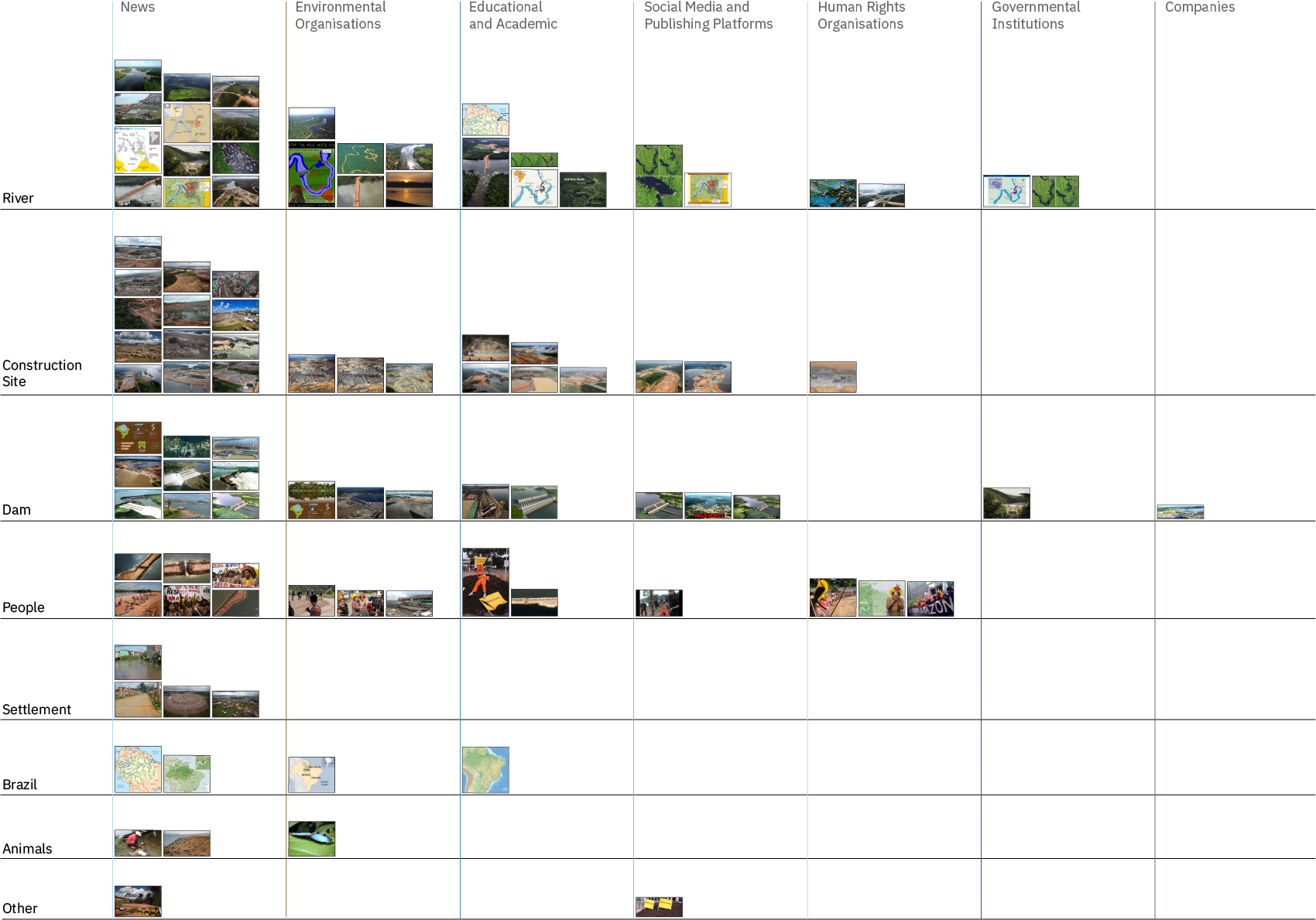Description
The chart shows how the website categories identified in the previous protocols are narrating the Belo Monte controversy through the use of images. As in the previous visualisations, both the international and Brazilian perspectives are shown in the toggleable graph.
It is visible that both international and Brazilian news websites are making use of pictures the most. The international narrative employs various subjects, including people and animals, whereas the Brazilian one is mainly focused on the dam itself. It is interesting to notice that local websites are not displaying almost any pictures of indigenous people, the most affected category by the dam construction, and that, in contrast with the English query, every website category is using images to complete their narrative.
In general, it is notable that in both queries images of the river Xingu are extensively used to report the controversy, indicating that the riverine ecosystem is highly valued by the sources in order to connote the debate.
Protocol
Like in protocol 2.1, Google was queried with the words “Belo Monte Dam” and “Usina Hidrelétrica de Belo Monte,” using the same settings as previously. The first 100 pictures resulting in Google Images for each request as of 24th November 2018 were considered as an output. The images were manually downloaded and manually categorised according to the subject they were depicting. 8 categories were introduced to describe them (River, Construction Site, Dam, People, Settlement, Brazil, Animals, Other). The websites where the images originated from were also manually tagged using the same categories used in the previous protocols. The visualisation was created on Adobe Illustrator using the stacked images in order to create a bar chart.
Data
Data Source: Google Images
Timestamp: 24/11/2018
View Data (69Kb)
The dataset includes all the images processed and one .tsv file for each google query with the subject and technique categorisation of the pictures.

